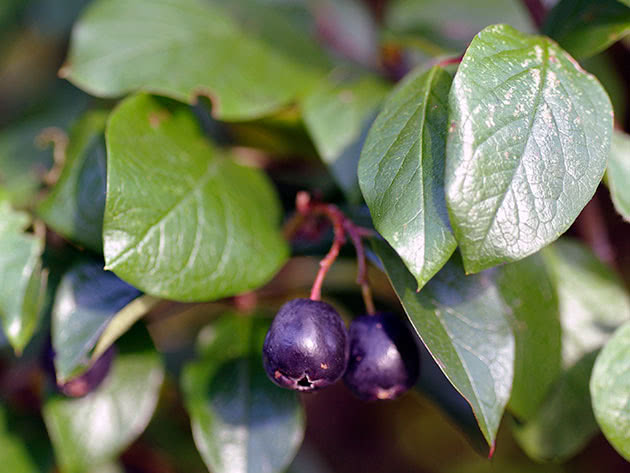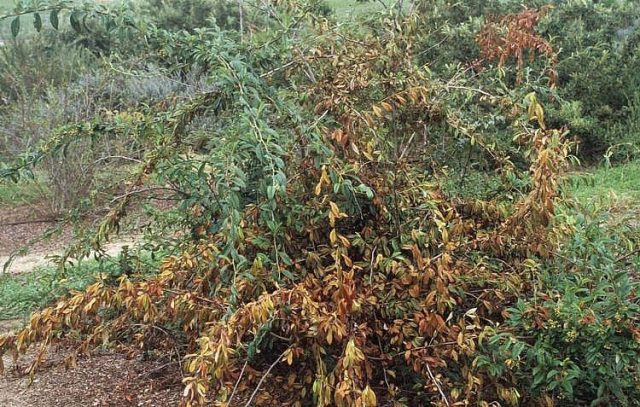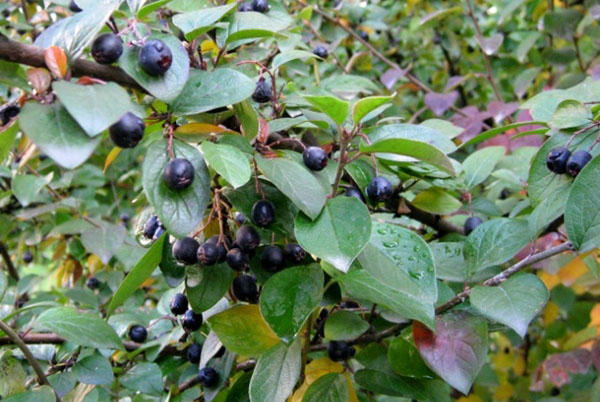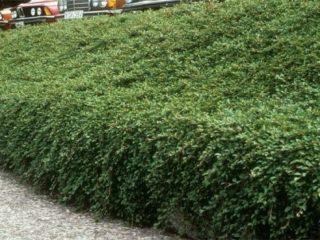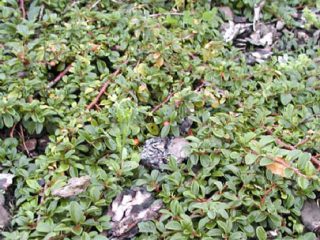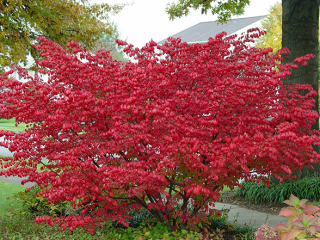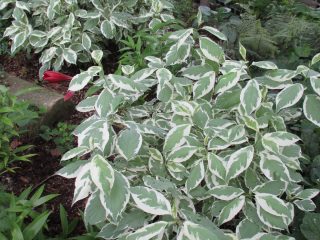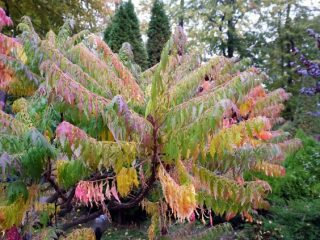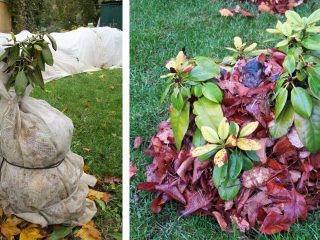Content
Aronia cotoneaster is a close relative of the classic red cotoneaster, which is also used for decorative purposes. These two plants are successfully used in various areas of landscape design and decorate many areas with unusual figures. The chokeberry cotoneaster looks elegant in the photo, as well as on the site.
Description of cotoneaster
This variety of cotoneaster is distributed over a vast territory from the Caucasus to the Himalayas. This is a shrub that reaches a height of 2 meters. The spreading of the crown is 1.5 meters.
Leaves with distinct veins. The leaf shape is ovoid. Dimensions are about 4 cm. The leaf has a smooth front surface of a dark green color and a lighter back side with a rough surface. In autumn, the leaves change their color to bright purple, which gives the shrub a particularly elegant look.
Black cotoneaster blooms at the end of May. The flowers are small, white-pink, collected in inflorescences. After 3–4 weeks of flowering, fruit ovaries form on the bush.
Berries on the bush begin to form only in the fifth year after planting. When unripe, the fruits of this variety of cotoneaster are brown in color.But gradually they ripen and turn into blue-black round berries. They often spend the winter right on the bush. This gives the plant a certain elegance in winter.
Black cotoneaster is a completely edible berry. But due to the lack of a pronounced taste, it is eaten extremely rarely. However, this berry contains a large amount of vitamins and nutrients. The lifespan of the shrub is up to 50 years. Therefore, it is beneficial to use it as a decorative decoration. Despite its unpretentiousness, cotoneaster does not require special care, and it will decorate the area for a long time.
Drought and frost resistance
First of all, it is worth noting that chokeberry dogwood is very resistant to temperature changes. That is why gardeners and landscape designers love him. The shrub can withstand severe frosts, and there is no need to cover it for the winter.
Resistance to diseases and pests
Cotoneaster with black berries is highly resistant to both various diseases and many pests. The most common disease is fusarium. This is a fungal disease that occurs due to high humidity.
The most common pests are aphids, spider mites and scale insects. With proper and timely preventive treatment, there is no need to use additional control agents. Sometimes a solution of ash or laundry soap is enough to treat a healthy bush as a preventive measure.
Landing Features
One-year or two-year-old seedlings are suitable for planting. The optimal planting time is spring, even before the start of the growing season, or autumn, immediately after leaf fall. In this case, the cotoneaster will take root well and grow quickly.
The shrub does not impose any special conditions on the planting site, but experts recommend planting cotoneaster on the sunny side of the site.
They plant shrubs in a hole; if it is necessary to make a hedge, then a ditch is used.
The pit should be 70 cm wide and approximately the same depth. This way you can provide sufficient freedom to the roots of the bush and its crown. When creating a hedge, plants can be planted a little closer to each other.
A drainage layer of pebbles and broken red brick is laid at the bottom of the pit. Then you should prepare a nutrient soil. To do this, take 2 parts turf soil and mix it with 2 parts sand and one part compost. Compost can be replaced with peat.
The seedling is placed in a hole in a vertical position and covered with earth. The soil must be compacted periodically, right down to the top layer. The root collar should be level with the ground. After planting, be sure to water the plant abundantly.
For those who decorate the site with several types of plants, it will be pleasant to know that cotoneaster gets along well with all its neighbors, but the best option is small coniferous plantings nearby. Cotoneaster looks elegant in this combination.
Aftercare for cotoneaster
Caring for cotoneaster does not seem difficult. The plant must be watered, pruned and fed. And also provide him with prevention in the fight against pests and possible diseases.
Cotoneaster categorically does not like large amounts of moisture. If the summer is rainy, then the plant may not be watered at all. During dry summers, it is enough to water the cotoneaster once every 14 days at the rate of 1 bucket of water per bush. If watering is carried out once a month, then it can be made more abundant and up to three buckets of water can be added under the bush. To wash away dust, washing the leaves with a hose is suitable.
It is better to feed the bush at least once a season so that it continues to grow stronger. The first feeding is carried out in the spring. You need to take 25 g of urea per bucket of water and apply the solution to the area near the root. Before flowering, the optimal fertilizer is one containing potassium (15 g per square meter). In autumn, mulching with peat occurs.
Shrub pruning can be sanitary and formative. Sanitary pruning is carried out to remove diseased and damaged shoots. Formative pruning is carried out annually to shape the bush and remove too long shoots. Ideally, pruning is done before the growing season begins. This way the bush tolerates it better.
There is no need to specially cover the shrub, but it is recommended to mulch the soil with peat. The mulch layer is 8–10 cm. If there is no snow in winter, then the bushes should be bent to the ground and covered with leaves.
Diseases and pests, methods of control and prevention
The main disease that affects cotoneaster bushes is fusarium. To combat it, it is necessary to carry out sanitary pruning after the first signs of the disease appear.All cut branches must be destroyed. After pruning, the remaining plant must be treated with a fungicide to prevent spread. And also as a preventive measure, special means are used once a year. The main preventive measure is to avoid excessive waterlogging.
The most effective and popular pest control agents: Karbofos, Aktelik, Fitoverm. Use in dosage according to instructions.
Conclusion
Black cotoneaster is not just an ornamental shrub with beautiful berries, but also a very useful plant. Its fruits are used dried, grated into baked goods and consumed with tea. At the same time, the shrub is unpretentious in care and is a true long-liver. All these qualities make the plant indispensable for use in landscape design and simply for decorating a site. Photos and descriptions of the black cotoneaster do not allow it to be confused with similar plants and its relative, the red cotoneaster.
